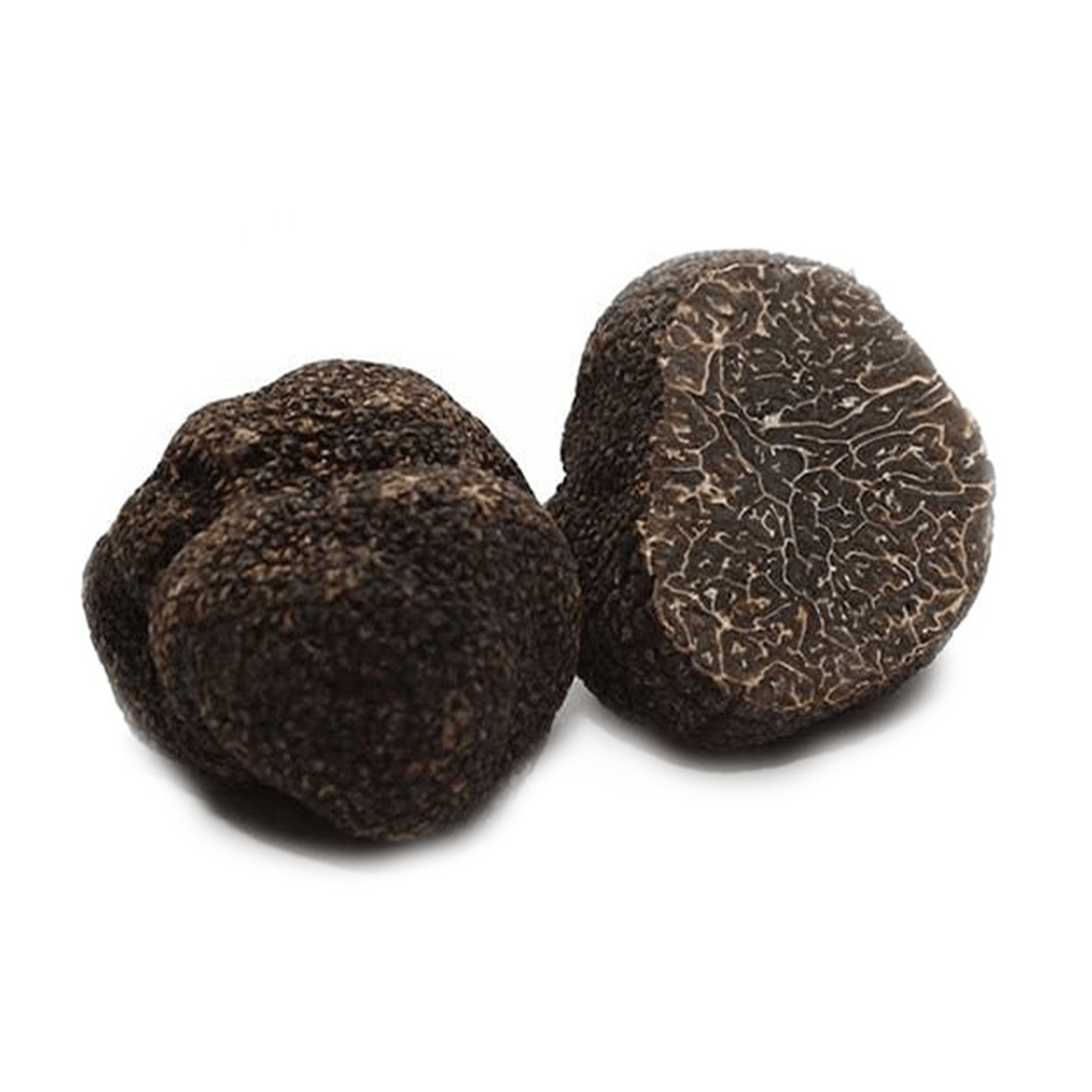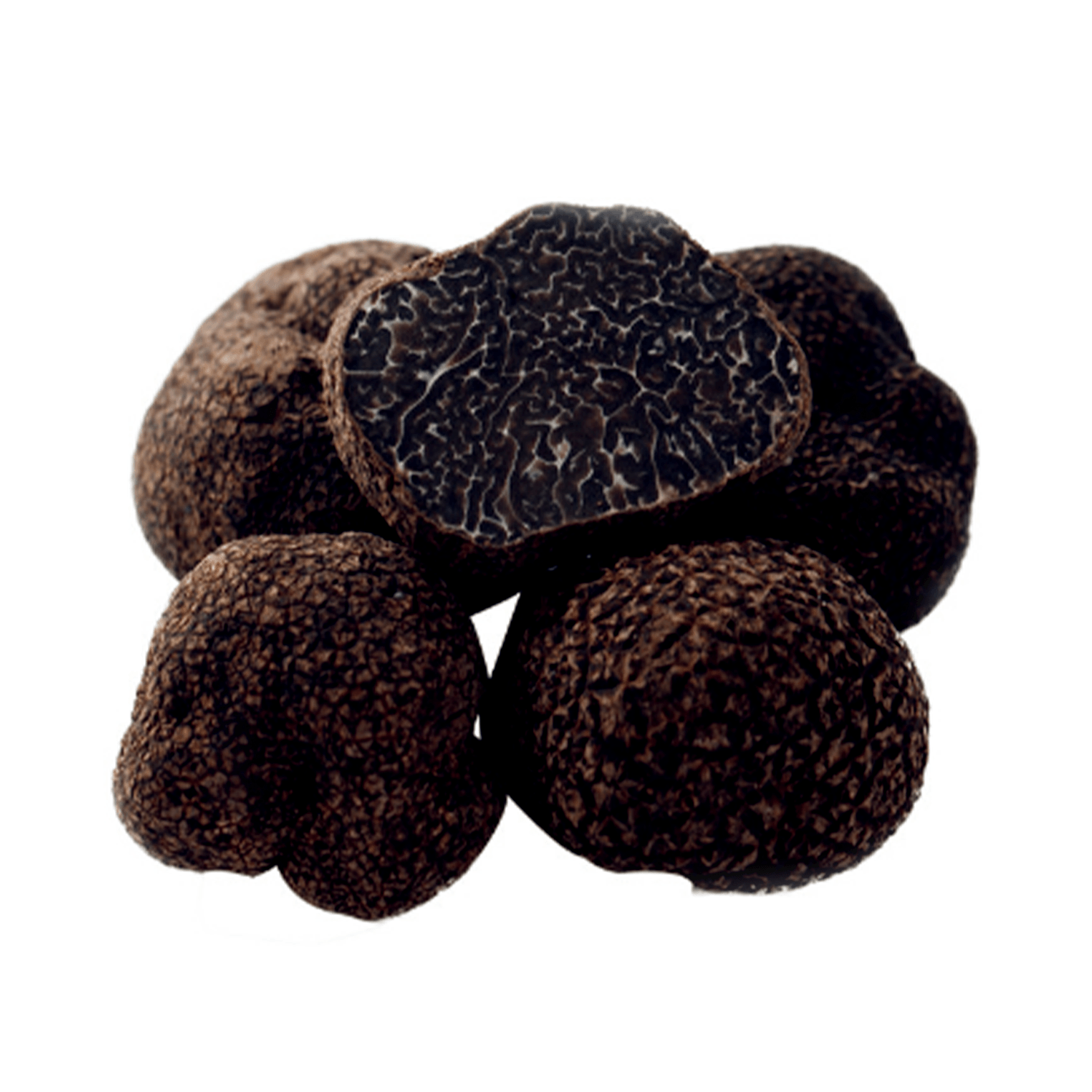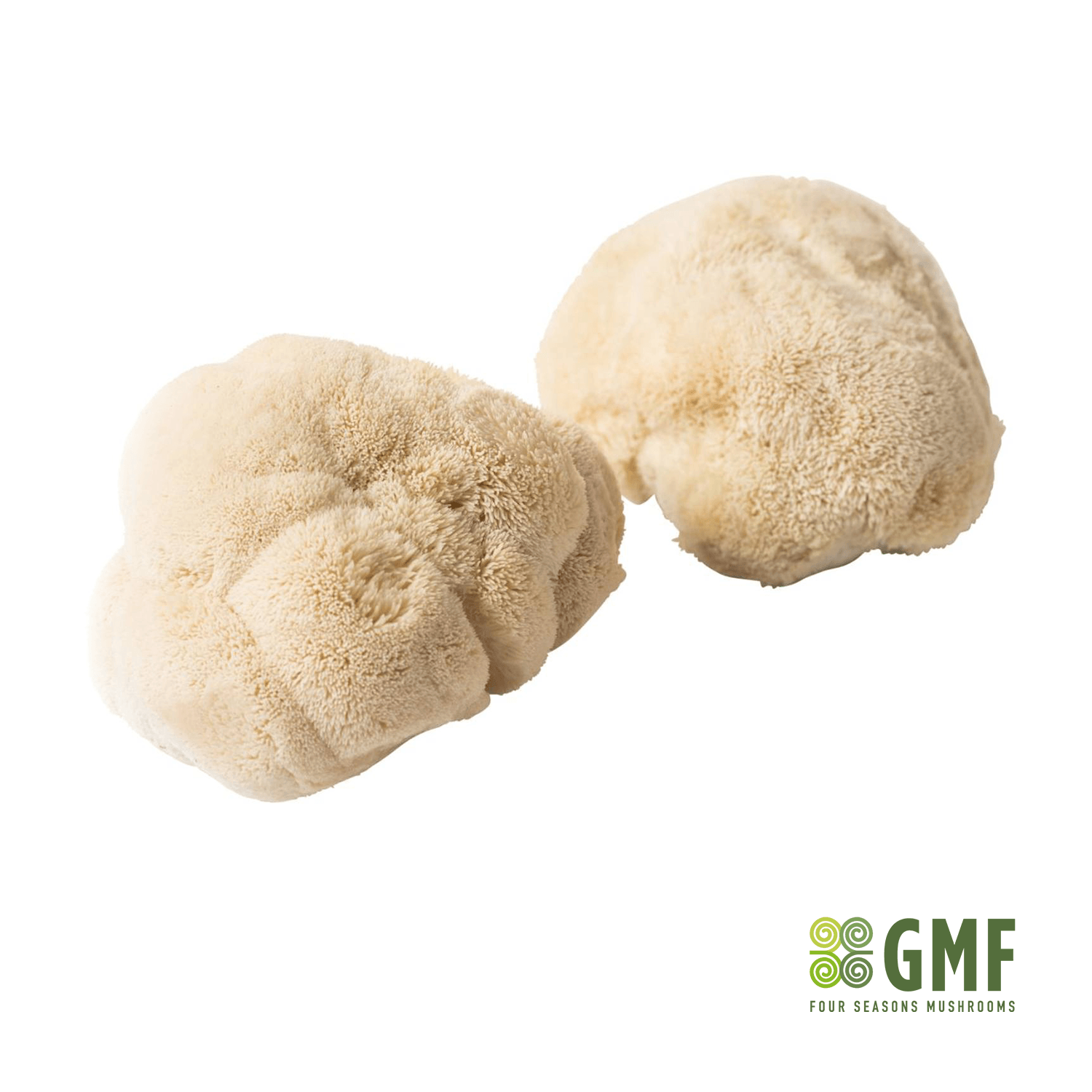BLACK TRUFFLE
Tuber melanosporum
Black truffles widely vary in size and shape, averaging 2 to 10 centimeters in diameter, and have a rounded, lumpy, and lopsided appearance, molded by stones and other textural components of soil. The truffle's surface ranges in color from brown-black to dark brown, covered in many crevices and pyramidal warts, also known as protrusions, ranging between 3 to 9 millimeters in diameter. Each small knobby protrusion is angular with 4 to 6 sides, creating a rough and bumpy feel, often likened to alligator skin. Underneath the surface, the flesh is light brown to tan and bears a thick, spongy consistency. There is also a faint marbled pattern unique to each truffle, and the thin, branching veins do not change colour when exposed to the air. Black truffles contain a subtle aroma and have a mild, delicate flavour reminiscent of porcini mushrooms mixed with garlic, chocolate, and hazelnut nuances.


PREPARATION
Black truffles have a distinct, enveloping flavor that is best used sparingly to flavor raw or cooked preparations. The truffles should be cleaned before use, and it is recommended that the surface be brushed or wiped rather than rinsed under water, as moisture will rot the fungus. Once cleaned, the truffles are usually shaved, grated, sliced or thinly sliced, and it is important to note that the truffles should be added at the end of cooked preparations, as prolonged heating will diminish the flavor of the truffle. Black truffles can be made into oil for dressings, made into sauces and honey, or put in butter and spread over crusty bread sprinkled with salt. The umami-rich flavor of the truffles pairs well with fatty, rich elements, wine or cream-based sauces, and bland ingredients such as potatoes, rice, and pasta for enhanced flavor. Black truffles can also be thinly sliced for salads, pasta, risotto, soups and egg dishes, or they can be placed under the skin of poultry or turkey and cooked to give them an earthy flavor. The subtle flavor of the truffle gives depth to pizzas, chips and roasts, or shavings can be stirred into mashed potatoes, macaroni with cheese, casseroles, and layered in sandwiches such as grilled cheese. A more unusual application of the truffles is to simmer them lightly with sugar, mix and freeze them in ice. The truffles can also be put on bruschetta, sprinkled over fish, or tucked into ravioli. Black truffles go well with herbs such as tarragon, basil and parsley, aromatic herbs such as garlic, shallots and onions, cheeses such as goat, parmesan, fontina, chevre and gouda, meats such as beef, turkey, poultry, game, pork and duck, and celery root, mushrooms, arugula and white wine. Fresh Black Truffles will keep for up to a week if wrapped in a paper towel or moisture-absorbing cloth and stored in a sealed container in the crisper drawer of the refrigerator. The truffle must remain dry for the best quality and taste. If the truffle is stored for more than a few days, the paper towel should be changed regularly to avoid humidity, as the fungus naturally releases moisture when stored. Black truffles can also be wrapped in foil, placed in a freezer bag and frozen for 1 to 3 months.
Truffles have an impressive nutritional profile and contain many important vitamins and minerals. They are high in carbohydrates, protein and fiber and both saturated and unsaturated fatty acids, as well as micronutrients, such as vitamin C, phosphorus, sodium, calcium, magnesium, manganese and iron. Research also indicates that truffles can be a complete source of protein, as they provide all nine essential amino acids your body needs. Truffles are a great source of antioxidants, compounds that help fight free radicals and prevent oxidative damage to your cells.
Other Names
- Zwarte truffle (Dutch)Schwarze truffle (German)Truffe noire (French)Tuber mélanosporum (Latin)Black Truffle (Engels)
All Rights Reserved | Green Mushroom Farm B.V.








